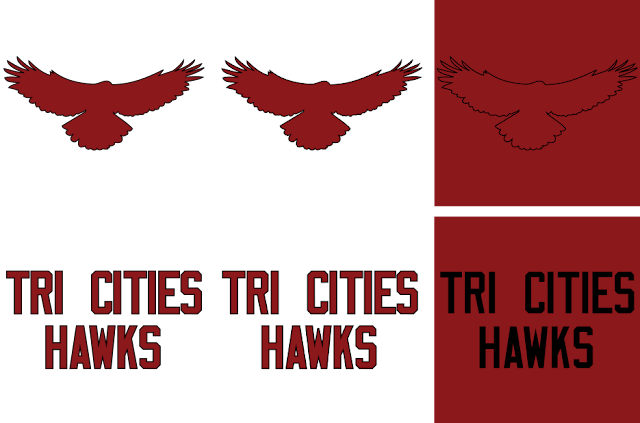1951-52 Offseason
Retirements:
A lot of big names took the field for the final time last year, some creating a larger effect on some teams more than others. Tri-Cities was the headliner for retirements this year, losing a lot of their depth at wide receiver and offensive line. Two of the bigger retirements from the 1950 championship team were WR Stuart Kane, who was one of QB Gilbert Clay’s favorite targets in the super trio of receivers that team had, and most notably RB Herman Gibbons, 1950 championship MVP and the emotional leader of that team, whose leg injury last year ended up effectively ending his career. The Hawks losing those key positions leave them scrambling to remain relevant against rival Chicago and up-and-coming Cincinnati within their division. Chicago did have some walk away after winning the championship, including 1950 DPOY DB Vincent Kelly and DB Tommy Lane, whose leadership in the secondary being one of the reasons the team dominated last year, who gave way to a younger and more developed core in the secondary for the future to come. One other lesser-known but still impactful retirement was Detroit OL Bill Delaney, who was a 15-year starter for the Knights, and whose departure will leave a massive hole in a young core that needs improvement.
Coaching Changes:
After two years of having a young core that couldn’t do anything, Detroit finally realized that maybe coaching might be the problem and not the players. After two pitiful years in the AFL without a winning season and the team not living up to its potential, Knights owner August Riddle fired both OC Daniel Cooley and DC Morris Hyde in hopes of revitalizing the team for the future. At the same time, Tri-Cities shockingly fired both OC Irvin Hull and DC Joseph Franks, only 1 year removed from a championship. Tri-Cities owner Bert Hester was disappointed that neither could perform to the same standard as the year before, with Hull proving ineffective with RB Herman Gibbons out for the year and Franks struggling to lead the defense.
Each team didn’t hire from within, and instead looked at nearby colleges for their replacements. Detroit would find replacement OC Lonnie Gibbons from Upper Peninsula University, whose play calling on the Yoopers’ offense catapulted them to a mid-major power from a non-factor in recent years. The Knights also called on former player and now DC Elmer Morton from the University of Indiana, who played on the team in its early years and was on their watch list once the Panthers’ defense began making waves recently.
Tri-Cities looked even closer to finding their replacement for their coordinators, with OC Milton Wheeler coming from just across the Mississippi from the University of the Tri-Cities, who has led the Black Hawks to consecutive Great Lakes Conference titles for the first time in school history. The replacement DC was Hugh Harrison from Iowa A&M, who developed the Fightin’ Monks from a pushover to a competitor defensively.
Trades:
With the draft looming, some teams were desperate looking to plug in holes in places they lost. Tri-Cities had lost a lot of their wide receivers and offensive linemen, and needed someone to lead those rooms. They went around to nearly every team, but Detroit was one of the first to respond and sought out some sort of deal with the Hawks. In what was deemed the “Trade to End All Trades”, Detroit dealt stars WR George Payne and OL Cecil Martin to the Hawks in exchange for DL Ted Walter, LB Herman Gardner, and a plethora of draft picks, which include the Hawks’ first round picks for 1952 and 1953, a 3rd round pick in 1952, and a 4th round pick in 1953. It came as a shock to Knights fans, who were in a weird limbo between being good and being horrible, giving up two of their star players to a former division rival, but had their future in their hands with 2 additional first round picks in the draft. Most are saying that Tri-Cities gave up too much for 2 players and are focusing too much in the short term. Tri-Cities owner Bert Hester argued that although they might be giving up a lot, this was necessary for the team to retain its championship ambitions for the years to come. Payne and Martin are starting to get past their prime, and it’s up to time to tell if they will pan out and give the Hawks another championship, or if this will backfire horrendously for them.
Pittsburgh was also trying to test out the new market once they officially became members of the AFL. Becoming unsatisfied with QB Leslie Snow over the past few years in the NYPL, they decided they were going to shop around at the position to upgrade. Coincidentally, Cincinnati was also looking to move on from one of their QB’s, as they were confident in young QB Lester Parker over their other two veterans in Lee Christian and Clarence Stanley. The Rivermen wanted to move on from either of the two that started for them last year, and gave Pittsburgh the choice between the two of them. Ultimately, the Shamrocks wanted Stanley more, and traded WR Paul Doyle, a 2nd round pick this year and a 3rd and a 5th round next year for Stanley, WR Brian Robertson, and the Rivermen’s 3rd round pick in 1953. There wasn’t a consensus winner of the trade just yet, but Pittsburgh may want to develop a QB of their own and want a better person to do so than what they have. Cincinnati acquired some decent picks and continues to build a receiving core to complement breakout star WR Alfred Dunn.




Comments
Post a Comment